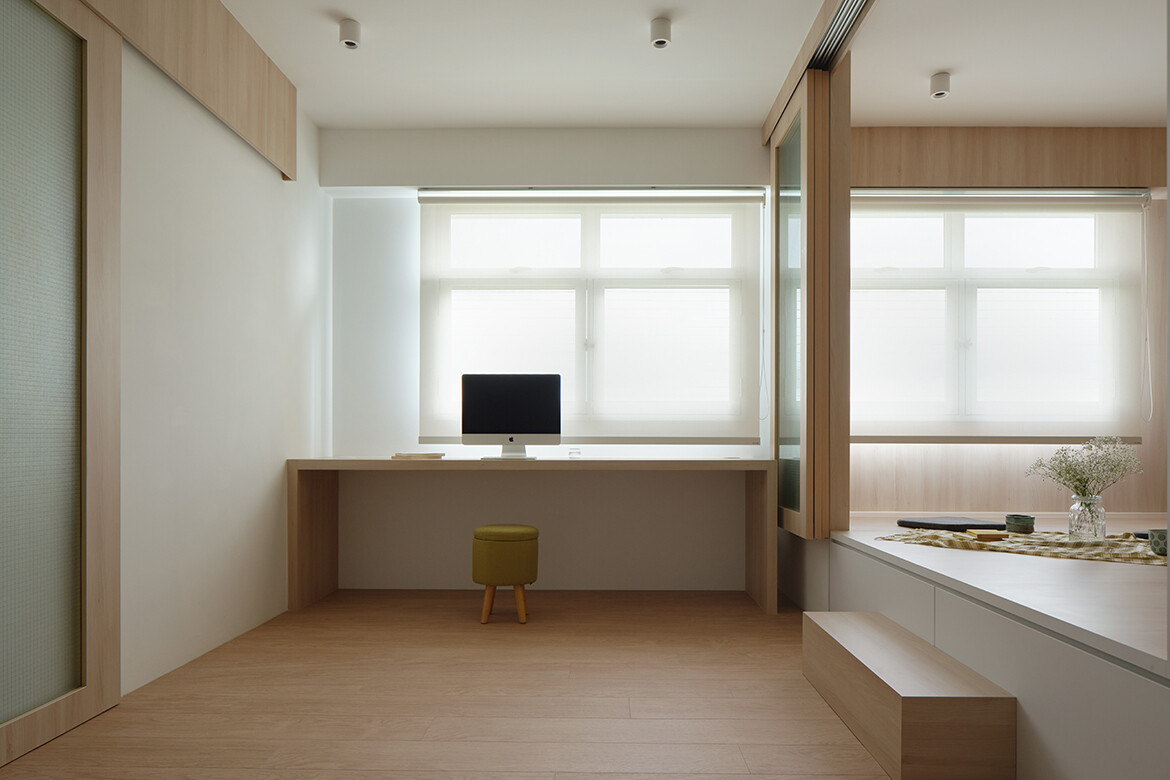Singapore’s public housing has seen much creativity in recent times in light of homeowners being more open to different ways of living. At the same time, these alternative designs reflect prevailing and popular lifestyle habits.
alittlepractice has designed a four-bedroom public housing apartment that provides a case study.
The owners live here with two cats. “They love the aesthetics of calm spaces like Japanese tearooms, and the traditional tiles [of the older architecture] of Taiwan and Singapore where they’re from,” says the firm’s co-founder Low Mingfang on the design brief. “They also wanted the spaces to be flexible as they work from home.”
Together with the firm’s other founder Lin Huiying, Low decided to demolish and replace some non-load-bearing walls with moveable sliding panels so that the spaces can open up to one another while affording privacy whenever necessary.
“We planned the [layout] such that the fluidity and flexibility of the spaces still feel coherent as a whole,” says Lin. This also brightens up the originally dark unit.
Removing part of the wall between the living and adjacent room enlarges the feel of the former spatially. The additional space is now used as a versatile study room that contains a tearoom-cum-TV room.
The entrance to the powder room from the kitchen was shifted so guests need not enter the owners’ private domain to access the bathroom. Sliding panels allow the study and bedroom to be closed off from the common areas and function as two separate areas when shut.

Carefully planned storage acting as space dividers reduces clutter, resulting in a sense of calm in the home. A joinery block at the foyer containing the shoe cabinet contains the dry pantry on the other side facing the kitchen.
The main wardrobe is also a backdrop to the tearoom, which has additional storage beneath for when family members visit and the futons are taken out. The bay windows are made useful with storage beneath them.
The warm colour palette of the liberally employed timber laminates was chosen as another way to inject a sense of calm into the home. “They are used on the walls and platforms of the tearoom to create a cocoon-like space,” says Low. Likewise for the main bedroom, where timber laminate wraps the walls and floor of the raised bed platform, and the study room’s custom-made bookshelves and desk.
The only deviation is in the foyer joinery and the kitchen, where terrazzo tiles and mint-green cabinetry present a pop of colour for a dose of cheeriness to accompany the heartwarming activities of cooking and prepping food.

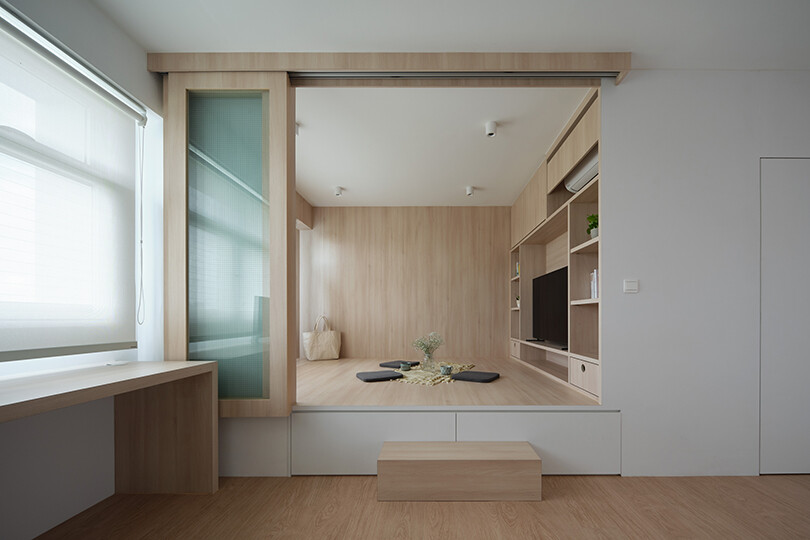




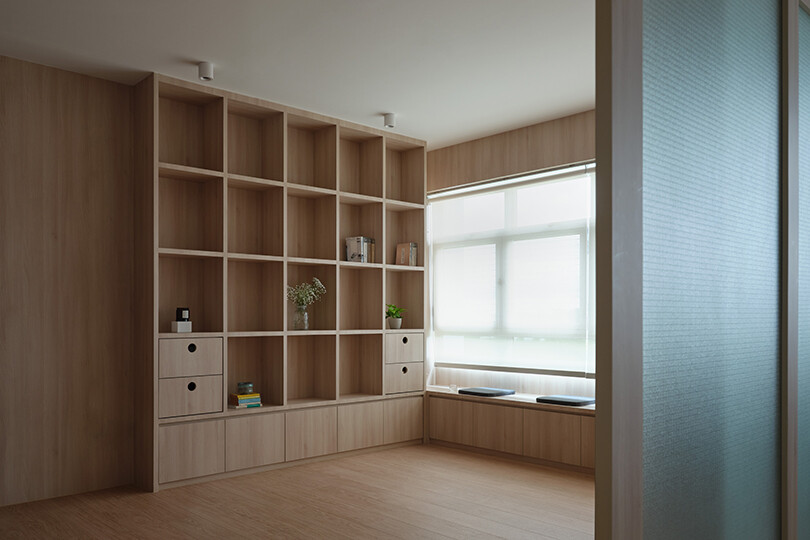
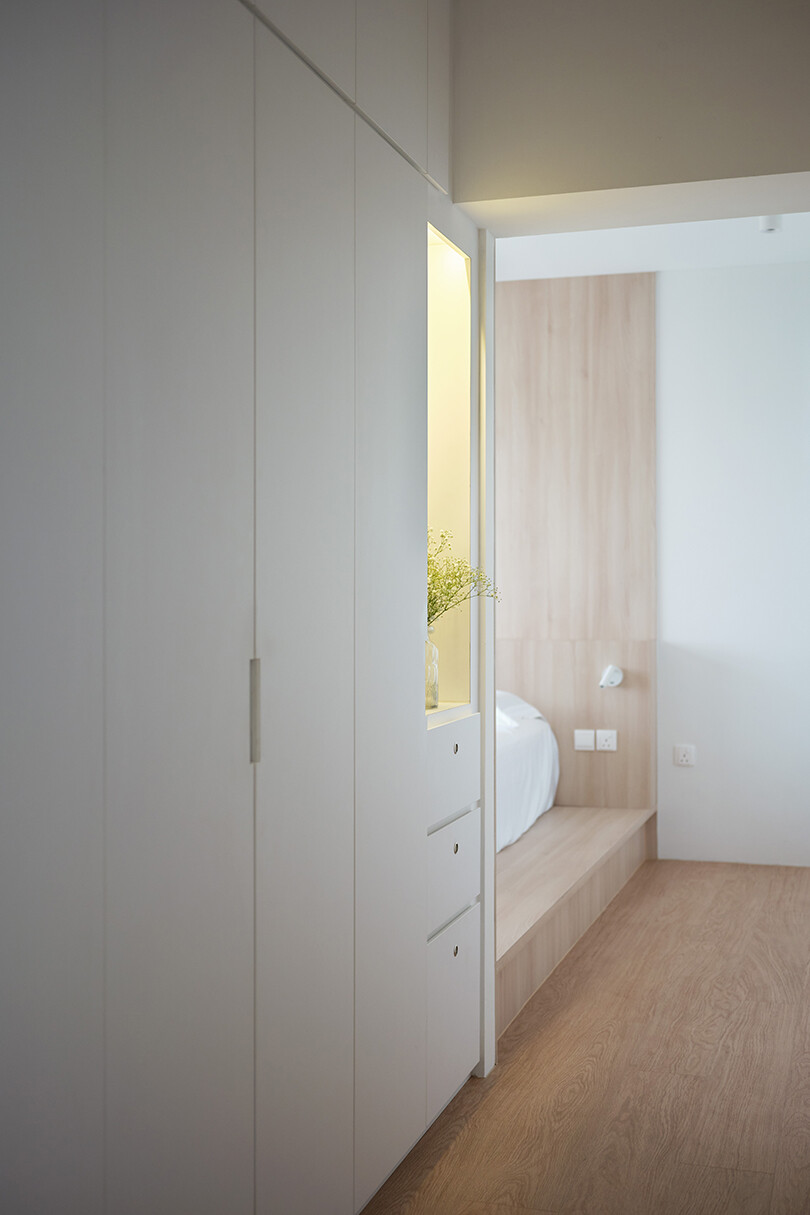
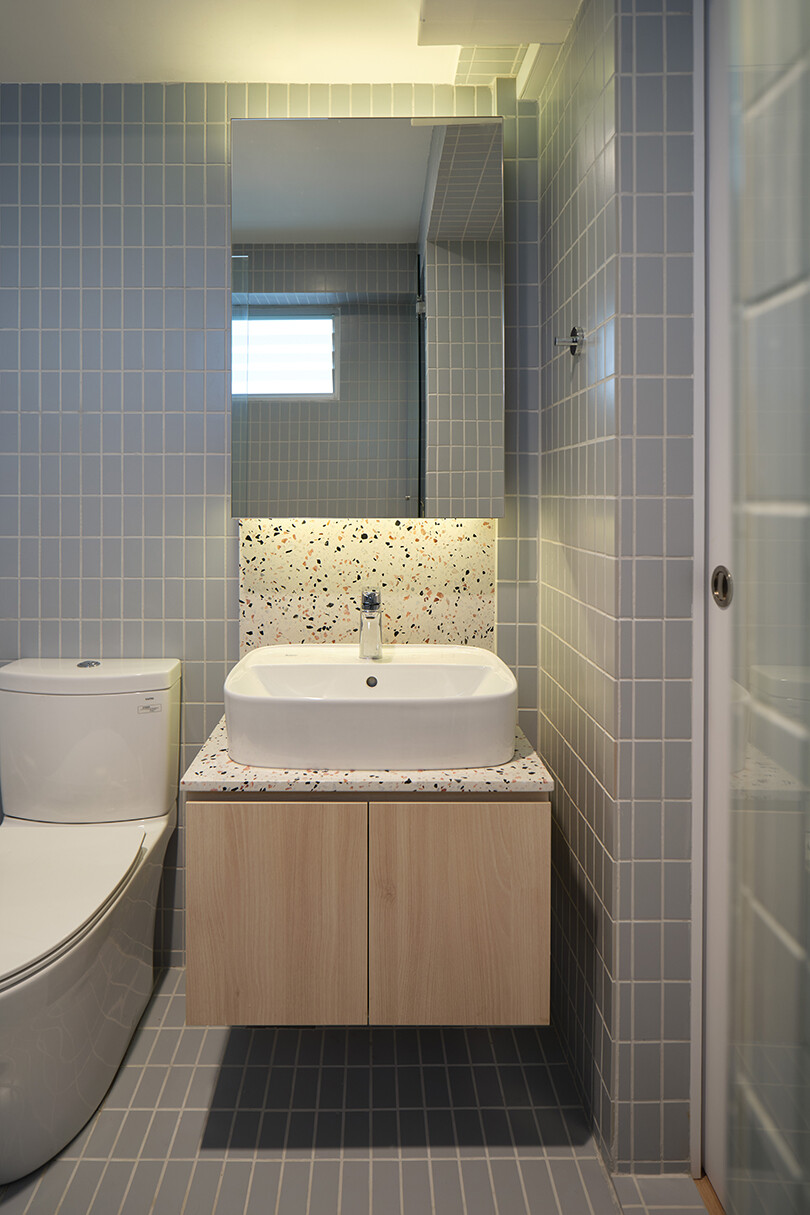
Project details
Interior design – alittlepractice
Photography – Fabian Ong
We think you might like this restful apartment by Parenthesis, which is also designed with a soothing palette

